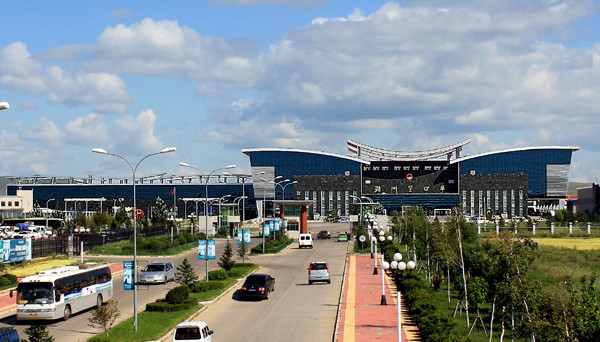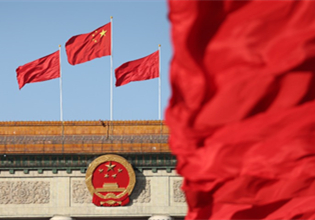Hulubuir sees remarkable achievements over past 70 years

Manzhouli Port in Hulunbuir, in North China's Inner Mongolia autonomous region. [Photo/nmgnews.com]
The GDP of Hulunbuir, a city in North China's Inner Mongolia autonomous region, reached 125.29 billion yuan ($17.73 billion) in 2018, over 900 times higher than its GDP of 127 million yuan in 1952, local officials said at a press conference in Hohhot, capital of the autonomous region, on Sept 16.
The news conference was part of a series of events being held in Inner Mongolia to celebrate the autonomous region's achievements over the past 70 years and to mark the 70th anniversary of the founding of the People's Republic of China.
Hulunbuir's per capita GDP has increased from 365 yuan in 1952 to around 40,000 yuan in 2018, a more than 100-fold increase, and its total fiscal revenue increased from 10 million yuan to over 8.6 billion yuan in 2018. The region has made important breakthroughs in developing its economy and improving living standards and public services.
In 2018, Hulunbuir's grain output reached seven billion kilograms, and its livestock output reached 10.24 million, 43.4 and 8.7 times more than in 1949, respectively. The total output value of industrial enterprises above a designated size reached 53.4 billion yuan, 151 times the number in 1949, and the added value of the tertiary industry increased from seven million yuan in 1952 to 50 billion yuan in 2018.
Over the years, Hulunbuir has taken up a greater role in the Belt and Road Initiative and has focused on building a new open economic pattern. In 2018, the total value of imports and exports passing through eight major ports, including Manzhouli Port, Arihashate Port, and Ebuduge Port, reached 18.9 billion yuan, over 5,000 times more than in 1957. The average annual growth rate is 15 percent.
Hulunbuir's is changing from an economy based on coal, electricity, metallurgy, and chemicals to one based on green agriculture, animal husbandry, forestry, tourism, ice and snow, airports, big data, and cloud computing.
In 2018, the per capita disposable income of Hulunbuir's urban and rural residents reached 33,401 yuan and 14,895 yuan, respectively, 42.8 and 25.6 times higher than in 1986. The region's urbanization rate reached 72.6 percent, an increase of 37 percent since 1949.
The impoverished population of Hulunbuir has decreased from 123,000 in 2014 to 7,915 by the end of 2018. The number of poverty-stricken villages has been reduced from 286 to 39.
Hulunbuir now has 28,000 km of road and 1,987 km of railway, up from 100 km and 811 km when the autonomous region was founded. The aviation network layout of four regional airports and six general airports was initially formed. Hulunbuir Airport ranked 58th among 245 airports nationwide and third in Inner Mongolia in terms of number of flights and passengers and amount of cargo.



 Print
Print Mail
Mail





